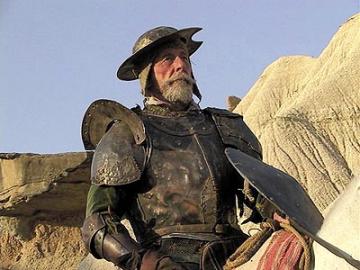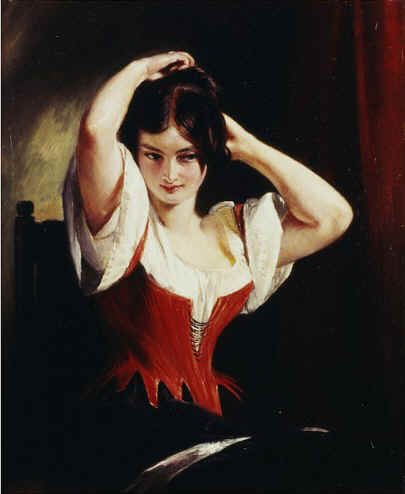|
The
Pastoral Wanderings
Sancho
and Don Quixote go on, and fall in with a group of goatherds. Don Quixote tells
Sancho and the goatherds about the “Golden Age” of man, reminiscent of both
Ovid and the later Rousseau in which property does not exist, and men live in
peace. The goatherds invite the Knight and Sancho to the funeral of Grisóstomo,
once a student who left his studies to become a shepherd after reading Pastoral
novels, seeking the shepherdess Marcela. At the funeral Marcela appears,
delivering a long speech vindicating herself from the bitter verses written
about her by Grisóstomo, claiming her own autonomy and freedom from
expectations put on her by Pastoral clichés. She disappears into the woods, and
Don Quixote and Sancho follow. Ultimately giving up, the two stop and dismount
by a pond to rest. Some Galicians arrive to water their ponies, and Rocinante
attempts to mate with them. The Galicians hit Rocinante with clubs to dissuade
him, which Don Quixote takes as a threat and runs to defend Rocinante. The
Galicians beat Don Quixote and Sancho leaving them in great pain.
The
Adventures with Cardenio and Dorotea
After
leaving the prisoners, The Knight and Sancho wander into the Sierra Morena, and
there encounter the dejected Cardenio. Cardenio relates the first part of his
story, in which he falls deeply in love with his childhood friend Luscinda, and
is hired as the companion to the Duke’s son, leading to his friendship with
the Duke’s younger son, Don Fernando. Cardenio confides in Don Fernando his
love for Luscinda and the delays in their engagement, caused by Cardenio’s
desire to keep with tradition. After reading Cardenio’s poems praising
Luscinda, Don Fernando falls in love with her. Don Quixote interrupts when
Cardenio suggests that his beloved may have become unfaithful after the
formulaic stories of spurned lovers in Chivalric novels.
In
the course of their travels, the protagonists meet innkeepers, prostitutes,
goatherds, soldiers, priests, escaped convicts, and scorned lovers. These
encounters are magnified by Don Quixote’s imagination into chivalrous quests.
Don Quixote’s tendency to intervene violently in matters which do not concern
him, and his habit of not paying his debts, result in many privations, injuries,
and humiliations (with Sancho often getting the worst of it). Finally, Don
Quixote is persuaded to return to his home village. The author hints that there
was a third quest, but says that records of it have been lost.
|


